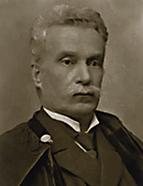

The most comprehensive and informed attempt to establish a system of art education is made by a man from outside the academy. He defends this position by arguing that teaching plans and knowledge of the art industry are the product of practical study, and that the presentation of art collections comes from firsthand travel experience (he made two trips of more than a year in European countries and, between 1876 and 1879, travelled throughout the country to document and illustrate his proposal). Throughout his life, he travelled extensively across the country, from north to south, observing artistic objects and monuments, often recording them in detailed drawings. It was the intersection of his ever-roaming gaze and the tireless probing of his own body that enabled him, in 1895, to rescue four panels from near-forgetfulness. These panels were rediscovered during a visit to the Monastery of São Vicente de Fora. The Saint Vincent Panels were covered in dust, almost obscured by darkness, hidden away in a corridor leading to the religious cells. It is true that the panels are in good condition, but they remain out of the country's critical eye.
He arrived at mainstream schooling due to financial difficulties (Joaquim de Vasconcelos: historiador, crítico de arte... [Joaquim de Vasconcelos: historian, art critic], p. 137) and began teaching English and German at the Liceu do Porto [Porto High School] in 1883, where he remained until 1924. He does not look back fondly on this teaching experience, often complaining about the effort required to engage students who were uninterested in learning, as well as the labour involved in grading tests. His experiences in higher education happened later in life and were very brief. At the age of 64, he taught at the Escola de Belas Artes do Porto [School of Fine Arts in Porto] (appointed to teach Art History in 1913 and dismissed at his own request in 1917) and authored lecture courses at the University of Coimbra (between 1915 and 1918, according to himself). Still within the field of education, he was appointed inspector of the Escolas Industriais da Circunscrição do Norte [Industrial Schools of the Northern District] (1891-1892), a position he held for seven months. During the Republic, he received an invitation to teach at the Faculdade de Letras de Lisboa [Lisbon School of Arts & Humanities].
This work is financed by national funds through FCT - Foundation for Science and Technology, I.P, in the scope of the projects UIDB/04311/2020 and UIDP/04311/2020.
